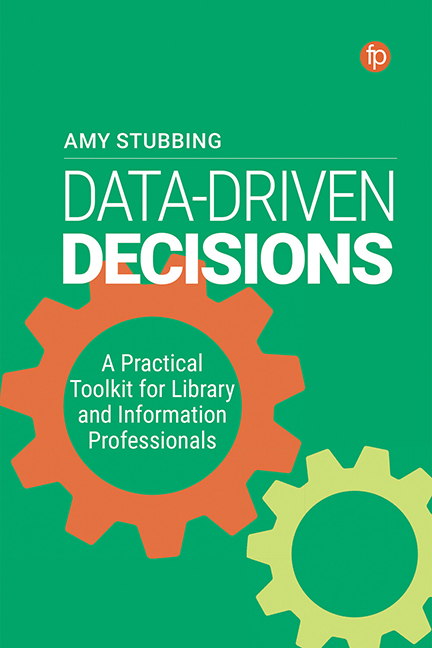13 - Starting from Scratch: Building a Data Culture at the University of Westminster
Published online by Cambridge University Press: 04 August 2022
Summary
Background
The University of Westminster (UoW) was the first polytechnic university in London, and opened in 1839. The University has a rich history, and supports a variety of subjects from the arts to business. Based in central London, the University is spread over numerous buildings in the West End, Marylebone and Harrow in West London. It currently has four site libraries spread across its different locations, each of which has its own subject focus, style and quirks.
When in 2013 the UK government announced it would lift the cap on the number of students individual universities could accept, the UoW, like many institutions, faced significant financial pressures as student numbers inevitably reduced. From 2015 the cap was removed entirely, and to respond the management had to make some significant cuts to remain financially viable. For UoW this included a large-scale redundancy exercise and restructuring, which included the library and archive services.
As there are four site libraries, students benefit from the flexibility of choosing where to study and what environment they want to study in. Each library site at Westminster feels unique and differs from each other in its environment. However, while refurbishments and investment had been carried out in some library sites, others needed real attention. Although students can choose where they study, books and resources for courses are at specific sites, often close to where students on those courses have their lectures, so often students would spend most of their time at their ‘home’ site. The inconsistency in investment and refurbishments alongside students having home sites made library users’ experiences incomparable.
Before the restructure the Library and Archives Service had a single senior manager for library sites and enquiry points, and one senior manager for academic liaison and collection development. There were cuts and reduction in staffing in many aspects of the service, along with significant changes to the senior management team, so frontline senior managers (site library services managers) took on much more responsibility and ability to develop services. Arguably the service had been somewhat stagnant for several years, and there was little room to review or suggest innovation. Senior manage ment had avoided making changes to services, and it felt as if the service had fallen behind other library services at competitor institutions.
- Type
- Chapter
- Information
- Data-Driven DecisionsA Practical Toolkit for Librarians and Information Professionals, pp. 141 - 154Publisher: FacetPrint publication year: 2022



